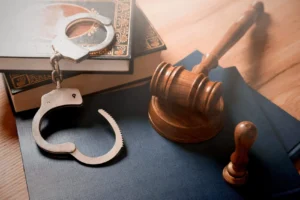Can I still get compensation if I was partially at fault for the accident?
When you’re involved in an accident, determining fault and liability can be a complex process. Many people wonder if they can still receive compensation if they were partially at fault for the incident. The answer to this question largely depends on the laws of your state and the specific circumstances of your case. Understanding the concept of comparative negligence and how it applies to accident compensation is crucial for anyone seeking to recover damages after an incident where they may have played a role in causing the accident.
In many states, the legal principle of comparative negligence allows individuals to recover damages even if they were partially at fault for an accident. This approach recognizes that accidents are often the result of multiple factors and that assigning 100% blame to one party isn’t always fair or accurate. Under comparative negligence laws, the amount of compensation you can receive is typically reduced by your percentage of fault in the accident.
There are three main types of comparative negligence systems used across the United States: pure comparative negligence, modified comparative negligence, and contributory negligence. Each of these systems handles partial fault differently, and it’s essential to understand which one applies in your state.
Pure comparative negligence is the most lenient system and is used in states like California, New York, and Florida. Under this approach, you can recover damages regardless of your degree of fault, as long as you weren’t 100% responsible for the accident. Your compensation will be reduced by your percentage of fault. For example, if you were 30% at fault for an accident and your total damages were $100,000, you could still recover $70,000.
Modified comparative negligence is a more common system, used in states like Texas, Illinois, and Ohio. This approach allows you to recover damages as long as your fault doesn’t exceed a certain threshold, typically 50% or 51%. If your fault is determined to be at or above this threshold, you cannot recover any damages. For instance, if you were 40% at fault in a state with a 51% threshold, you could still recover 60% of your damages. However, if you were 51% or more at fault, you would be barred from recovery.
Contributory negligence is the strictest system and is only used in a handful of states, including Alabama, Maryland, and Virginia. Under this approach, if you are found to be even 1% at fault for the accident, you are completely barred from recovering any damages. This system can be particularly harsh for accident victims and is why many states have moved away from it in favor of comparative negligence systems.
Understanding which system applies in your state is crucial when considering whether to pursue a personal injury claim after an accident where you may have been partially at fault. It’s always advisable to consult with a local attorney who specializes in personal injury law to get a clear understanding of your rights and options under your state’s specific laws.
When it comes to determining fault in an accident, various factors are taken into consideration. These may include police reports, witness statements, physical evidence from the accident scene, and expert testimony. In some cases, accident reconstruction experts may be called upon to analyze the evidence and provide a professional opinion on how the accident occurred and who was at fault.
It’s important to note that fault determination is not always a straightforward process. Insurance companies and opposing parties may try to assign you a higher percentage of fault to reduce their liability. This is where having experienced legal representation can be invaluable. A skilled personal injury attorney can help gather evidence, present your case effectively, and negotiate with insurance companies to ensure you receive fair compensation.
One crucial aspect of partial fault cases is the concept of duty of care. In personal injury law, all individuals have a duty to act with reasonable care to avoid causing harm to others. When determining fault, the court will consider whether each party involved in the accident breached their duty of care. For example, if you were speeding at the time of a car accident, you may be considered to have breached your duty of care to other drivers on the road.
However, it’s essential to remember that breaching a duty of care doesn’t automatically make you ineligible for compensation. Even if you were partially at fault, the other party may have also breached their duty of care in a way that contributed more significantly to the accident. This is why a thorough investigation and skilled legal representation are crucial in partial fault cases.
Another important factor to consider in partial fault cases is the concept of proximate cause. This legal principle examines whether your actions were a substantial factor in causing the accident and resulting injuries. Even if you were partially at fault, if your actions were not the primary cause of the accident, you may still be entitled to significant compensation.
For example, let’s say you were driving slightly over the speed limit when another driver ran a red light and hit your car. While your speeding may have contributed to the severity of the accident, the other driver’s action of running the red light would likely be considered the proximate cause of the collision. In this case, you might still be entitled to substantial compensation, even though you were partially at fault.
It’s also worth noting that in some cases, what may initially appear to be partial fault on your part could be mitigated by other factors. For instance, if you were involved in an accident due to a sudden medical emergency or a vehicle malfunction, these circumstances might reduce or eliminate your perceived fault in the incident. This is why it’s crucial to provide your attorney with all the details surrounding the accident, no matter how insignificant they may seem.
When pursuing compensation in a partial fault case, it’s important to understand the types of damages you may be eligible to recover. These typically fall into three categories: economic damages, non-economic damages, and in some cases, punitive damages.
Economic damages are the most straightforward and include quantifiable losses such as medical expenses, lost wages, property damage, and future medical care costs. These damages are typically easier to prove as they often come with receipts, bills, and other documentation.
Non-economic damages are more subjective and can include pain and suffering, emotional distress, loss of enjoyment of life, and loss of consortium. These damages are harder to quantify but can often make up a significant portion of a personal injury settlement or award.
Punitive damages are less common and are typically only awarded in cases where the defendant’s actions were particularly egregious or reckless. These damages are meant to punish the wrongdoer and deter similar behavior in the future.
In partial fault cases, all of these damages may be available, but the total amount you can recover will be reduced by your percentage of fault under comparative negligence laws.
It’s also important to be aware of the statute of limitations for personal injury claims in your state. This is the time limit within which you must file a lawsuit after an accident. If you fail to file within this timeframe, you may lose your right to seek compensation, regardless of the strength of your case or the extent of your injuries. Statutes of limitations vary by state and by the type of claim, so it’s crucial to consult with an attorney as soon as possible after an accident to ensure you don’t miss any important deadlines.
When dealing with insurance companies in a partial fault case, it’s important to be cautious. Insurance adjusters are trained to minimize payouts, and they may try to use your partial fault as leverage to offer a lower settlement. They may also try to get you to make statements that could be used to increase your percentage of fault. This is why it’s generally advisable to consult with an attorney before giving any statements to insurance companies or accepting any settlement offers.
An experienced personal injury attorney can help you navigate the complexities of dealing with insurance companies in partial fault cases. They can handle communications with the insurance adjuster, gather and present evidence to support your claim, and negotiate for a fair settlement that takes into account all of your damages, even if you were partially at fault for the accident.
In some cases, partial fault accidents may involve multiple parties, which can further complicate the process of determining liability and seeking compensation. For example, in a multi-car pileup, several drivers may share varying degrees of fault. In such cases, the principle of joint and several liability may come into play.
Joint and several liability allows an injured party to recover the full amount of damages from any one of the at-fault parties, regardless of their individual degree of fault. The defendant who pays can then seek contribution from the other at-fault parties. However, the application of joint and several liability varies by state, and some states have modified or eliminated this doctrine.
It’s also worth noting that in some cases, parties other than the immediate participants in an accident may share fault. For example, in a car accident case, a vehicle manufacturer might be partially at fault if a defective part contributed to the accident. Similarly, in a slip and fall case, both the property owner and a maintenance company might share fault. Identifying all potentially liable parties is an important part of maximizing your compensation in a partial fault case.
Another important aspect to consider in partial fault cases is the role of expert witnesses. These professionals can provide valuable testimony to help establish the facts of the case and determine the degree of fault for each party involved. Expert witnesses might include accident reconstruction specialists, medical professionals, economists (to calculate future losses), or industry experts relevant to the specific circumstances of your case.
For example, in a car accident case, an accident reconstruction expert might use physical evidence, witness statements, and scientific principles to create a detailed analysis of how the accident occurred. This could help establish that while you may have been partially at fault, the other driver’s actions were the primary cause of the collision.
Similarly, in a medical malpractice case where you may have contributed to your injury by not following all of your doctor’s instructions, a medical expert could testify about the standard of care and how the doctor’s negligence was the primary factor in causing your injury, despite your partial non-compliance.
It’s important to remember that while being partially at fault can reduce your compensation, it doesn’t necessarily mean your case isn’t worth pursuing. Even if you were 40% at fault for an accident, you could still potentially recover 60% of your damages, which could be a significant amount depending on the severity of your injuries and other losses.
Moreover, fault percentages are often negotiable. The initial fault determination by an insurance company or the other party’s legal team is not set in stone. Through skilled negotiation and presentation of evidence, your attorney may be able to reduce your perceived percentage of fault, thereby increasing your potential compensation.
One strategy that can be particularly effective in partial fault cases is focusing on the concept of last clear chance. This doctrine states that even if you were initially negligent, if the other party had the last clear opportunity to avoid the accident and failed to do so, they may be held liable. For example, if you were jaywalking (which is negligent), but a driver who was speeding had enough time to see you and stop but failed to do so, they might be held primarily responsible for the accident under the last clear chance doctrine.
It’s also worth noting that in some cases, what initially appears to be partial fault on your part may actually be a result of factors beyond your control. For instance, if you were in an accident because you swerved to avoid a hazard in the road, your actions might be considered a reasonable response to an emergency situation rather than negligence. This is known as the sudden emergency doctrine, and it can be a valuable defense in cases where you might otherwise be considered partially at fault.
When pursuing compensation in a partial fault case, it’s crucial to document everything related to the accident and your injuries. This includes taking photos of the accident scene and your injuries, keeping all medical records and bills, documenting any time missed from work, and maintaining a journal about how your injuries have affected your daily life. This documentation can be invaluable in proving the extent of your damages and countering arguments about your degree of fault.
It’s also important to be aware of the potential long-term impacts of your injuries. Some injuries may have effects that aren’t immediately apparent or that worsen over time. This is particularly true for injuries like traumatic brain injuries, spinal cord injuries, or complex fractures. When seeking compensation, it’s crucial to consider not just your current medical expenses and lost wages, but also potential future costs and losses. An experienced personal injury attorney can work with medical experts and economists to project these future damages and ensure they’re included in your claim.
In conclusion, being partially at fault for an accident doesn’t necessarily bar you from receiving compensation for your injuries and losses. The specific laws of your state, the degree of your fault, and the skill of your legal representation all play crucial roles in determining the outcome of your case. If you’ve been involved in an accident where you may have been partially at fault, it’s essential to consult with an experienced personal injury attorney who can evaluate your case, explain your rights, and help you pursue the compensation you deserve. Remember, even if you were partially at fault, you still have rights, and you may be entitled to significant compensation for your injuries and losses.
Sources:




















